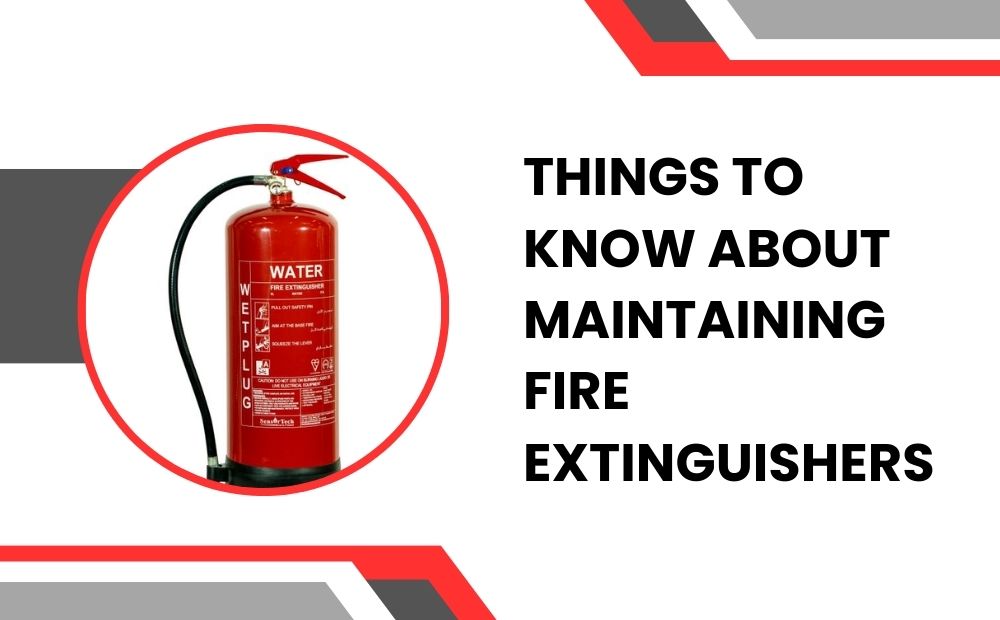Fire extinguishers are essential tools for fire safety in any environment, whether it’s a workplace, home, or public space. Proper maintenance ensures they are ready to perform effectively in the event of a fire emergency. Here’s everything you need to know about maintaining fire extinguishers to keep your premises safe.
Understanding Fire Extinguisher Maintenance
Regular maintenance of fire extinguishers is crucial for their reliability and functionality. It involves several key aspects that ensure the extinguishers are prepared to handle fires effectively when needed.
Importance of Regular Inspections
1. Visual Inspections
Regular visual inspections are necessary to ensure that fire extinguishers are accessible, visible, and free from any physical damage or obstruction. This includes checking the pressure gauge, seals, and overall condition of the extinguisher.
Note:- Effective Fire extinguishers suppliers dubai are necessary; don’t wait for an emergency to show this. Get in touch with Sensor Tech right now, the top provider of premium fire extinguishers in Dubai. We guarantee that our product line will meet all of your fire safety needs, enabling you to be prepared for any fire-related catastrophe.Give Sensor Tech a call right now to discuss your demands for fire safety and choose the best fire extinguishers to protect your assets, personnel, and company operations.
2. Annual Professional Inspections
Apart from visual inspections, fire extinguishers require thorough annual inspections by a qualified technician. These inspections involve checking internal components, ensuring the extinguishing agent is intact, and verifying that the extinguisher operates correctly when discharged.
Recharging and Hydrostatic Testing
1. Recharging
After any use or during routine inspections, if the pressure gauge indicates a recharge is necessary, the extinguisher should be recharged promptly by a certified professional. This ensures that the extinguisher is fully pressurized and ready for use.
2. Hydrostatic Testing
Hydrostatic testing is crucial for ensuring the integrity of the extinguisher’s pressure vessel. It is typically required every few years, depending on the type of extinguisher and local regulations. This test involves filling the extinguisher with water or another liquid at a higher pressure to check for leaks or structural weaknesses.
Proper Storage and Accessibility
1. Ideal Storage Conditions
Fire extinguishers should be stored in designated locations that are easily accessible and visible. They should be mounted securely on brackets or placed in cabinets to protect them from physical damage and environmental factors that could affect their performance.
2. Accessibility
Ensure that fire extinguishers are not obstructed by objects or stored behind doors that could prevent quick access in an emergency. They should be placed along escape routes and near potential fire hazards for easy reach.
Training on Fire Extinguisher Use
1. Employee Training
Proper training of employees on how to use fire extinguishers is essential for effective fire safety preparedness. Training should cover identifying the type of fire, using the correct extinguisher for the fire class, and the proper technique for extinguisher operation.
2. Regular Drills
Conducting regular fire drills that include practice with fire extinguishers helps reinforce training and ensures that employees are confident and prepared to use extinguishers in real emergencies.
Compliance with Regulations and Standards
1. Local Regulations
Different regions have specific regulations regarding the maintenance and inspection of fire extinguishers. It’s essential to comply with these regulations to avoid penalties and ensure the safety of your premises.
2. Industry Standards
Adhering to industry standards, such as those set by the National Fire Protection Association (NFPA) and local fire safety codes, ensures that your fire safety practices meet recognized benchmarks for effectiveness and reliability.
Importance of Inspection and Maintenance

Regular Inspections: Conducting frequent visual inspections ensures that fire extinguishers are readily accessible, visible, and free from damage. This proactive approach allows you to identify and address any issues promptly, ensuring that extinguishers are always ready for use.
Professional Maintenance: Annual inspections by qualified technicians are essential for verifying the internal condition of extinguishers, including checking the extinguishing agent, seals, and mechanisms. These thorough checks help maintain the extinguishers’ functionality and reliability over time.
Handling and Storage Best Practices
Proper Storage: Storing fire extinguishers in designated, easily accessible locations is crucial. Mounting them securely on brackets or placing them in cabinets protects them from physical damage and ensures they are always within reach during emergencies.
Accessibility: Ensuring that extinguishers are not obstructed by furniture, equipment, or other objects is vital. They should be strategically placed along escape routes and near potential fire hazards to facilitate quick and effective deployment.
Conclusion: Ensuring Fire Extinguisher Reliability
Regular maintenance and proper handling of fire extinguishers are essential for maintaining their reliability and effectiveness in fire emergencies. By following these guidelines for inspection, recharging, storage, training, and compliance, you can enhance workplace safety and protect lives and property from the devastating effects of fires.
Note:- For more articles visit on technewsideas.


